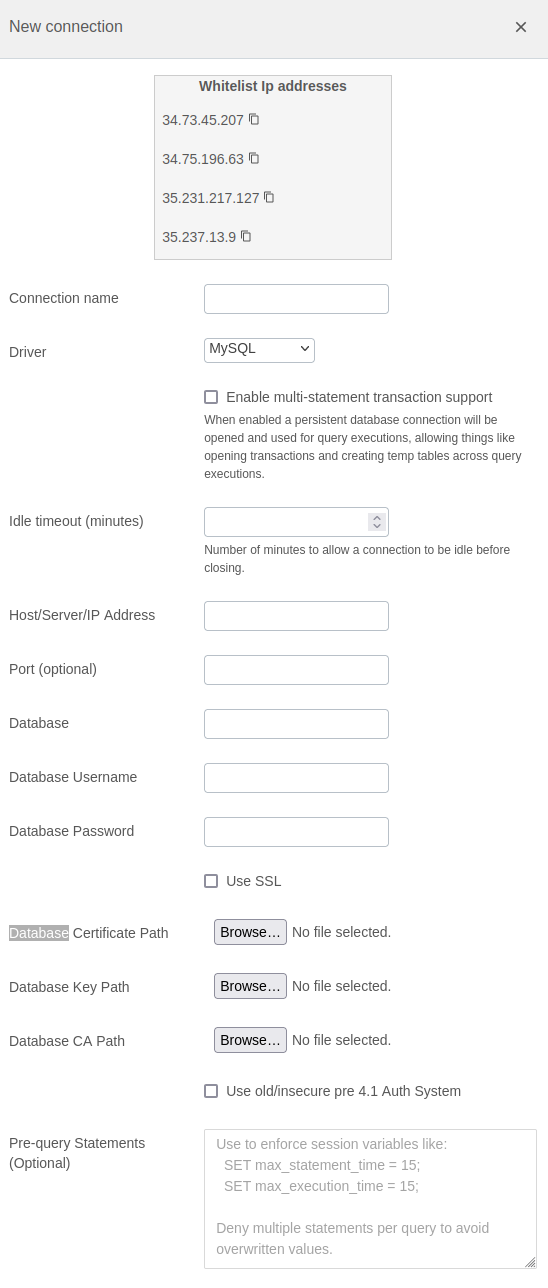MySQL Integration Documentation
Table of Parameters
| Key | Description | Optional | Data Type |
|---|---|---|---|
name | Name of connection | text | |
driver | Must be mysql | text | |
multiStatementTransactionEnabled | Reuse db connection across query executions. When enabled a persistent database connection will be opened and used for query executions, allowing things like opening transactions and creating temp tables across query executions | Yes | boolean |
Idle timeout | Number of minutes to allow a connection to be idle before closing. | boolean | |
host | Host/Server/IP Address | text | |
port | Port | Yes | number |
Database Certificate | Database certificate for SSL configuration | Yes | cert |
Database Key | Database key certificate for SSL configuration | Yes | cert |
Database CA | Database CA certificate for SSL configuration | Yes | cert |
database | Database | text | |
username | Database Username | text | |
password | Database Password | text | |
mysqlSsl | Use SSL | Yes | boolean |
mysqlInsecureAuth | Use old/insecure pre 4.1 Auth System | Yes | boolean |
Setup Information
To integrate MySQL with our system, follow these steps:
-
Select the MySQL Connector: Select the MySQL connector on import page in
Connectionmodal. -
Configure Connection Parameters: Use the parameters listed above to configure the connection to your MySQL instance.
-
Verify Connection: After configuring the parameters, verify the connection to ensure successful integration.
Connection modal

Additional Documentation
For more details and advanced configurations, refer to the official MySQL Documentation.
Support
If you encounter any issues or have questions, please contact our support team.